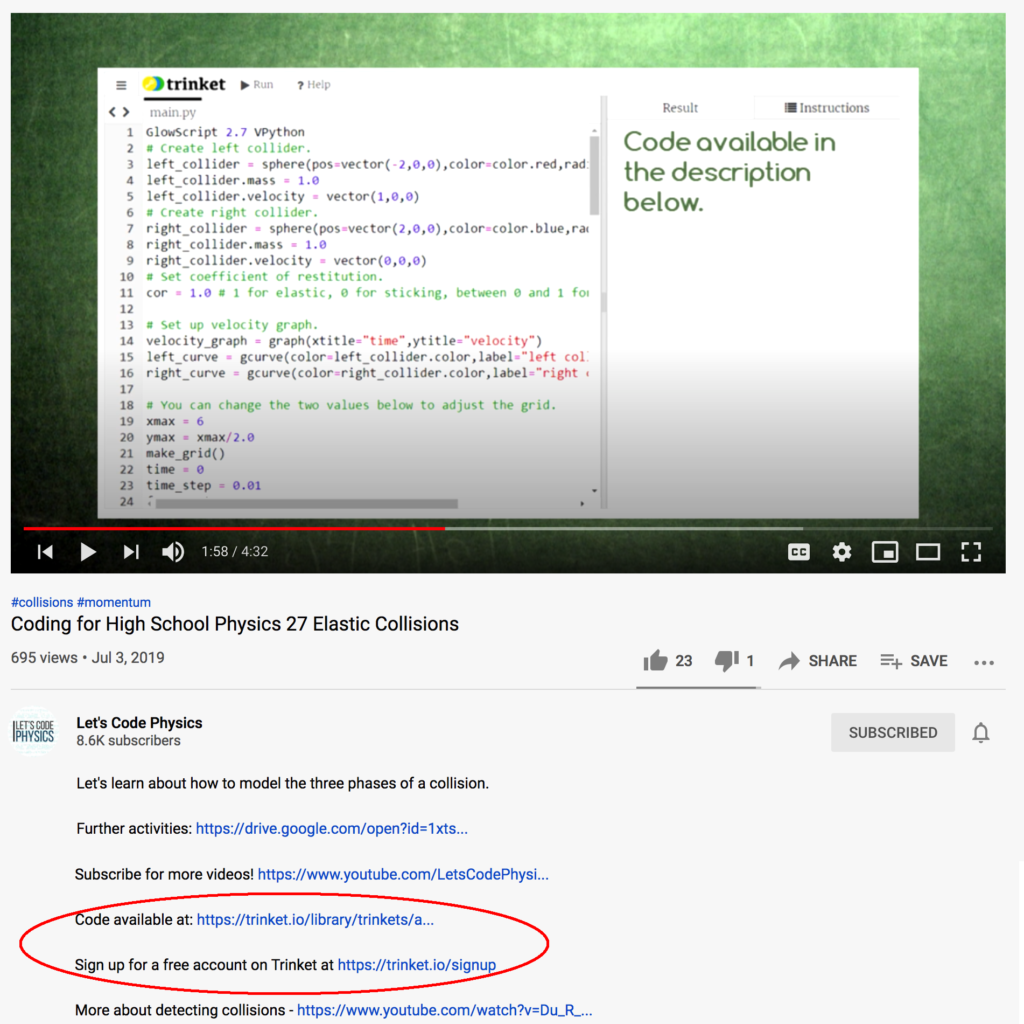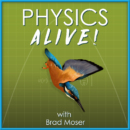The Physics Alive Podcast

Episode #12
Let's Code Physics with W. Brian Lane
Have you ever wanted to bring coding into your classroom? Or maybe you’ve introduced some computation, but you want to move to the next level? Let’s go code some physics! In this episode I talk with W. Brian Lane, the creator of the YouTube channel Let’s Code Physics. We talk about his videos, the online coding platforms he recommends, and how to get started coding in the classroom. We also talk about the workshops and exercise sets available through the PICUP community, and then branch into a different topic: replacing lab reports by asking students to write a letter home.
Today's Guest:
W. Brian Lane
Brian Lane is currently a visiting physics faculty member at the University of North Florida, creator of the YouTube channel Let’s Code Physics, and a contributing member of the PICUP community, the Partnership for Integration of Computation into Undergraduate Physics. With nearly 600 videos on his YouTube channel, he has a tutorial or coding tip for almost every level of physics class. Video series include V-Python for Beginners, Coding for High School Physics, Computational Problems for Intro Physics, and Tracker for Beginners.
Episode Notes and Resources
Check out the YouTube channel Let’s Code Physics. A few video series include:
- A Journey through Modern Physics
- VPython for Beginners
- Coding for High School Physics
- Computational Problems for Intro Physics
- Euler-Cromer for Beginners
- Tracker for Beginners
Online coding platforms
Using an online coding platform like Glowscript or p5.js streamlines the process of coding. Students/faculty can edit and run the program on their browser and save it to the cloud.
In Brian’s YouTube videos, he provides the code that he is working with in the video so that you can program along with him and use that code in your class.

Great analogy: Learning to program is a lot like learning a musical instrument.
- Learning a first instrument is very challenging; not only are you learning the instrument, but you are also learning to read music. Learning a second instrument is almost always easier; the rules of music have not changed. Once you learn one programming language, it’s much easier to learn another one after that because they all have the same structure.
Brian believes his biggest successes have been
Any new directions for the channel?
- Brian tries to have 2 or 3 major series each fall and spring semester
- Since he has many of the core components of programming covered in previous series, he’s branching into more course specific series
- For instance, for the Spring 2021 semester he will make a series for junior level Modern Physics
- Physics of the Wheel of Time book series??
PICUP – Partnership for Integration of Computation in Undergraduate Physics
- Learn more at Compadre.org/PICUP
Resources on the website
- Schedule of events: webinars, workshops, recordings
- Collection of peer-reviewed exercise sets
- Ready for classroom use, with starter code and lead-in code
- PICUP Slack channel. People post on this multiple times a week with questions and answers
Where to learn more in-person?
- There is usually a 2-3 day intensive new faculty PICUP workshop each year.
- There are AAPT sessions and workshops about PICUP each meeting.
How can I build more confidence in my ability to teaching coding in physics?
- Start with an existing code. Don’t start with a blank program.
- Play with the code like it was a lab experiment. Know how “the equipment” works. You don’t read a manual to learn the code; you play with the program and coding.
- Think about your goals for incorporating computation in the class. What are you hoping to accomplish?
- One goal is to support the physics. In this case, learning all of the nuts and bolts of coding may not be your major interest.
- Another goal is teaching computational skills. You want students to know what’s “under the hood.”
- You need to determine where you are on this spectrum. This will determine the types of activities you write, what you ask your students to do, and how much weight you put on the coding itself.
- Scaffolding process
- You and students start by reading code. Can you look at the lines of code and say what it will do?
- Then you want to learn to use code.
- Then modify code.
- Then add code.
- This guides you toward the end goal of being able to write code from scratch.
And now for something completely different: sending a letter home to mom and dad (or 5-year old brother, for instance) about the physics you learned in lab
